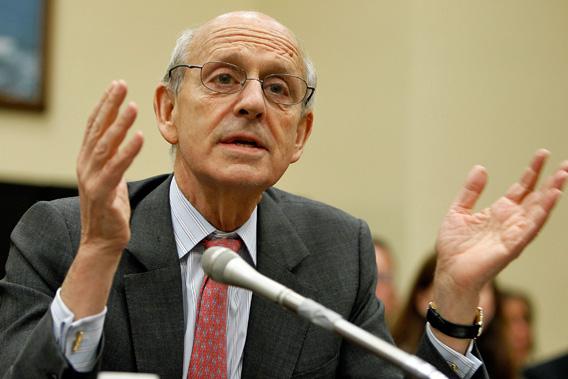At first glance, the 7–1 vote in the Fisher affirmative action case decided by the Supreme Court is puzzling. While the decision about the University of Texas’ admissions policies was essentially a punt, putting off for another day the future constitutionality of affirmative action programs, two of the court’s liberals (Justice Sonia Sotomayor and Justice Stephen Breyer) joined in an opinion that seemed to impose a very tough hurdle for any program’s constitutionality in the future. (Justice Ruth Bader Ginsburg dissented, and Justice Elena Kagan recused herself). The ruling followed a voting decision the week before, when all four of the court’s liberals signed on to Justice Scalia’s entire opinion in an Arizona voting case, which plants the seeds for new state attacks on federal voting laws. And in 2009, all four liberals signed onto an opinion calling into question the constitutionality of the Voting Rights Act, an opinion that Chief Justice John Roberts relied on heavily in his new Shelby County decision striking down part of the act.
What gives? Are the liberal justices acting as suckers for going along with these opinions, allowing conservatives the time bombs to go off in future cases? If, as Adam Liptak, Emily Bazelon, and I have argued, Roberts is playing a long game to move the court far to the right over time, why are the liberals playing along?
There’s no way for us to know what’s really going on behind the scenes at the Supreme Court. Leaks are exceedingly rare, and it will likely be decades before we get a peek at some justice’s papers to piece together the coalitions and strategies (we haven’t seen any papers from 2000’s Bush v. Gore yet, for example). But I can imagine three reasons the liberals might be savvier than they first appear to be.
The liberals are buying time. In 2009, it sure seemed from oral argument that the five conservative justices were ready to strike down Section 5 of the Voting Rights Act (the part that fell last week) as exceeding congressional power. But in the end, the court did not do that. Instead, eight of the nine Justices (with Justice Clarence Thomas dissenting) joined in a tendentious and unsupportable analysis of the voting rights statute to avoid deciding the constitutional question. The price of avoiding a 5–4 decision striking down part of the Voting Rights Act was likely the liberals’ agreement to cast doubt on the law’s constitutionality.
The price was worth it, even now. That 8–1 ruling gave Congress a chance to do something to fix the Voting Rights Act (though Congress didn’t). The decision also bought four more years of life for Section 5, during a period of intense redistricting following the 2010 census, and while states like Texas and South Carolina passed new strict voter ID laws. It was better to have the law on the books for a little longer than watch it fall.
The liberals are trying to run out the clock. Sure John Roberts is playing a long game, but time is on the liberals’ side. Democrats have won the popular vote in five of the last six presidential elections, and demographics favor them in continuing to win the presidency. If Democrats can win the next presidential election, the chance of replacing at least Justice Scalia or Justice Kennedy are pretty high, given that both are in their 70s. Liptak remarked that Scalia writes like a man in a hurry. If some decisions can be put off long enough, they might remain unresolved till the court shifts.
The liberals are trying to highlight the dangers of the Roberts Court. The 2009 Voting Rights Act decision should have been a wake-up call for Congress and the American public about the invalidation of the law we just saw. It’s the same with the affirmative action case, as well as last year’s health care case, which cut back significantly on Congress’ commerce clause powers. Dissents are one way to get the public’s attention. But they are not the only way. When the liberal justices sign on to an opinion that anticipates future reversals of Supreme Court precedent but doesn’t yet go quite that far, it’s a sign of significant behind-the-scenes compromise to avert disaster.
Even if the next cases, for example on affirmative action, do some bootstrapping from this year’s decision, with quotations thrown back in the face of the court’s liberals, we should not lament what they’ve done so far. They are playing a game of three-dimensional chess and we cannot see the entire board.
